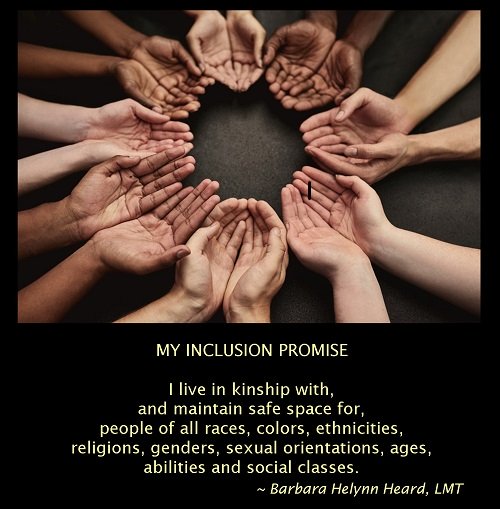~ HOOPONOPONO stories from my life ~
part 3: traditional, family style ho'oponopono

Ua mau ke ea o ka 'aina i ka pono.
The very life, breath & spirit of the land endures in right relationship between people, nature & Spirit.
Resolving difficult emotional situations within a family or community certainly supports healing. Feeling harmonious - free of emotional stress - we breath more easily, our blood flows and nourishes our tissues more easily, we rest more easily, we digest our food more easily, and the list goes on. Our bodies can focus full attention on healing.
ho'oponopono before medical treatment
Traditionally in Hawaii
when a person was ill or injured and
the family sought the help of a healer, the first step in the healing process was to hold
a ceremonial,
prayful, family hooponopono session led by a
respected family elder. Some
hooponopono sessions were
done quickly and others may have gone on
for days.
common
session format
In these structured hooponopono sessions, prayer began and ended the ceremony and was woven throughout the process. Feelings such as resentment, anger, fear, guilt and so forth held by any member of the family were brought to the light, restitution for harmful actions was arranged if necessary, and forgiveness was both directly asked for and directly given.
Within the hooponopono session, each family member was invited to share their feelings, thoughts and actions related to the issue at hand. This was done with guidance. When feelings ran hot, comments were directed to the leader, rather than directly to other individuals. The leader would ask helpful questions, make sure all had a chance to speak and be heard, call for prayer and/or ho'omalu (time out to restore calm) when needed, and guide the agreements for amends and forgiveness.

peeling an onion
Many times a series of directly and or indirectly related issues were resolved one by one before the ho'oponopono session was considered complete. The closing prayer was then spoken and the shared, closing meal was served. The resolution of multiple issues was referred to as peeling the onion.
after resolving an issue, don't speak of it again
One particular aspect of traditional ho'oponopono sessions that I have come to respect is the expectation and agreement that after a situation is resolved in a ho'oponopono session, it is complete and is not to be spoken of again. This practice prevents the issue from being repeatedly reopened the same way that a person prolongs healing by picking at a scab. The genuine focused healing intent of all participants in the ho'oponopono session combined with the passing of time after the session is complete supports full healing.
The practice of disciplining myself not to reopen already resolved, painful emotional issues - at least until ALL the emotional juice in these issues has COMPLETELY dissipated - serves me well. And following this practice certainly does requires discipline on my part!!!
my personal experiences
I've twice participated in group ho'oponopono sessions such as the one described here. The first time was in a residential lomi class setting and the problem involved miscommunication about money between the teacher, the site host and the students. The teacher led the ho'oponopono session.
The second group ho'oponopono session I participated in occurred in a year long Hawaiian healing class called Ka 'Imi Pono that I team taught. During a circle sharing session which I personally facilitated one of the students snapped at another student and heated words followed. As the group leader, I ended this incident as quickly and gracefully as I could. The following time we met as a group I led a ho'oponopono session involving the entire group.
In both of the group ho'oponopono sessions mentioned above the issues were resolved and laid to rest, yet I was left with less than a sense of full peace. In the session that I lead, two of the students chose to leave the group the following month. I wish it could have gone differently.
In both cases, the person who led the ho'oponopono session were parties to the trouble which led to the need for the ho'oponopono session. As such we played double roles - we both led the hooponopono session and participated as a member of the group. This is difficult.
no us & them, no winners & losers
Playing double roles is tricky to do and I feel grateful that we were as successful as we were. Functioning as an egalitarian group while simultaneously respecting and working with leadership requires skillful leadership and an open mind and heart by all participants. There can be no winners and losers.
Working with leadership in an egalitarian setting is a good skill to have in our world today. Doing so requires that all parties involved prioritize their desire to fully resolve the issues at hand and to come to peace with each other over their desire to be right or to win.
For more information about traditional family style ho'oponopono see
- Nana i ke Kumu (Look to the Source) by Pukui, Haertig and Lee
- Ho'oponopono
by Victoria Shook
click
here
to
read ho'oponopono part 1: what is hooponopono
click here
to read ho'oponopono part 2: concepts embedded in
greetings
click
here to read ho'oponopono part 3: traditional family
style hooponopono
click
here to read ho'oponopono part 4: contemporary
hooponopono, cutting cords
click
here to read ho'oponopono part 5 on being Hawaiian
click
here to read ho'oponopono part 6: making amends
click
here to read ho'oponopono part 7: radiating Light
click
here to read ho'oponopono part 8: we live in an
auspicious time
click
here to read ho'oponopono part 9: appendix - SITH®
Copyrighted 2010 Barbara Helynn Heard
For more information visit www.lomilomi-massage
Email barbaraheard at msn dot com
Olympia, Washington
All materials are copyrighted. If you would like to post
articles on
your website or use it as training material, permission is granted as
long as all contact and credit information remains intact.
Thank you.
